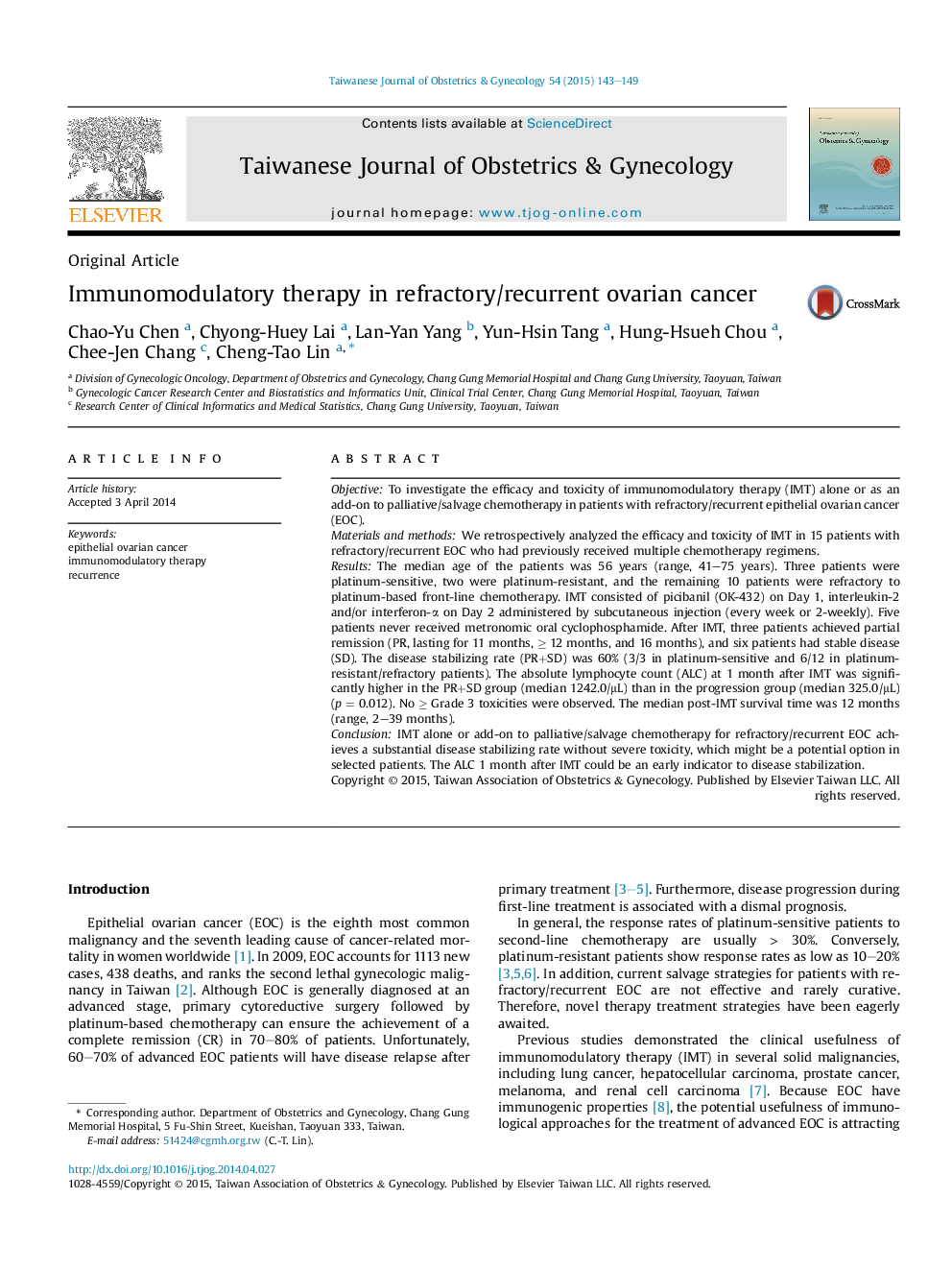| Article ID | Journal | Published Year | Pages | File Type |
|---|---|---|---|---|
| 3975575 | Taiwanese Journal of Obstetrics and Gynecology | 2015 | 7 Pages |
ObjectiveTo investigate the efficacy and toxicity of immunomodulatory therapy (IMT) alone or as an add-on to palliative/salvage chemotherapy in patients with refractory/recurrent epithelial ovarian cancer (EOC).Materials and methodsWe retrospectively analyzed the efficacy and toxicity of IMT in 15 patients with refractory/recurrent EOC who had previously received multiple chemotherapy regimens.ResultsThe median age of the patients was 56 years (range, 41–75 years). Three patients were platinum-sensitive, two were platinum-resistant, and the remaining 10 patients were refractory to platinum-based front-line chemotherapy. IMT consisted of picibanil (OK-432) on Day 1, interleukin-2 and/or interferon-α on Day 2 administered by subcutaneous injection (every week or 2-weekly). Five patients never received metronomic oral cyclophosphamide. After IMT, three patients achieved partial remission (PR, lasting for 11 months, ≥ 12 months, and 16 months), and six patients had stable disease (SD). The disease stabilizing rate (PR+SD) was 60% (3/3 in platinum-sensitive and 6/12 in platinum-resistant/refractory patients). The absolute lymphocyte count (ALC) at 1 month after IMT was significantly higher in the PR+SD group (median 1242.0/μL) than in the progression group (median 325.0/μL) (p = 0.012). No ≥ Grade 3 toxicities were observed. The median post-IMT survival time was 12 months (range, 2–39 months).ConclusionIMT alone or add-on to palliative/salvage chemotherapy for refractory/recurrent EOC achieves a substantial disease stabilizing rate without severe toxicity, which might be a potential option in selected patients. The ALC 1 month after IMT could be an early indicator to disease stabilization.
